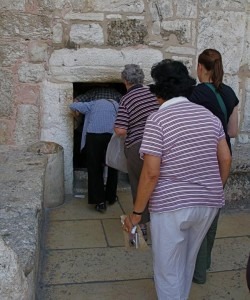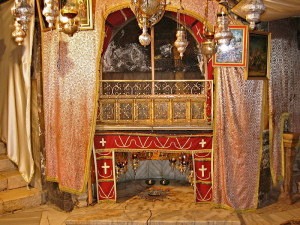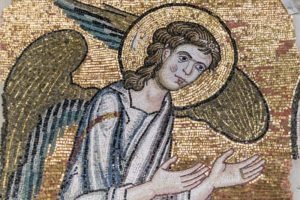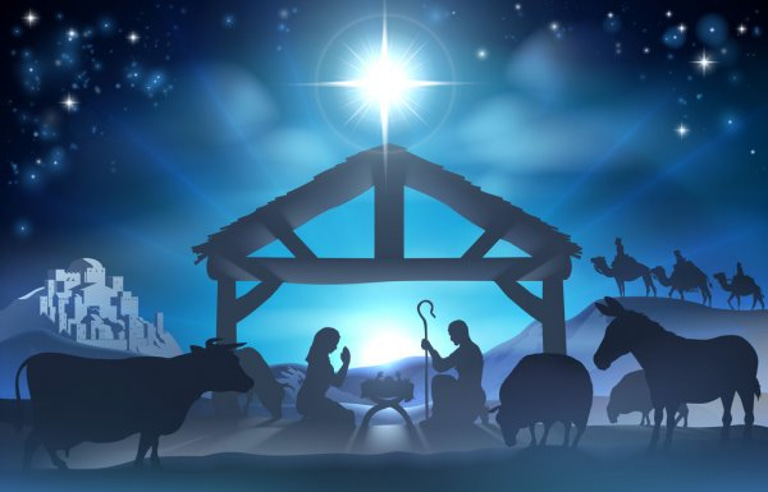Step Inside Bethlehem’s Church of the Nativity: A Christmas Journey
Visit the Church of the Nativity in Bethlehem. Experience the birthplace of Jesus and connect with centuries of faith and tradition.
TRADITIONS
Grace Callahan
11/21/20247 min read


The town of Bethlehem in the West Bank is home to many significant Christian sites, but none are more revered than the Church of the Nativity. It’s a place where history, faith, and tradition converge, and visiting this sacred site feels like stepping into a living story. For Christians around the world, it marks the spot where Jesus Christ was born, forever altering the course of history.
As someone who’s always felt connected to the Christmas story, I couldn’t help but be moved by the looking into this iconic church. Standing in the same place where Jesus was born, surrounded by centuries of rich history, would be nothing short of breathtaking. In this blog post, I’ll share everything you need to know about the Church of the Nativity, from its historical significance to the experience of visiting this world-renowned holy site.
The Historical Significance of the Church of the Nativity
Let’s start with a little history. The Church of the Nativity is not only one of the oldest continuously operating churches in the world, but it is also one of the most significant Christian sites globally. It was originally built in 327 AD under the direction of Emperor Constantine I, the first Roman emperor to embrace Christianity. Constantine’s mother, St. Helena, made a pilgrimage to the Holy Land, and upon visiting Bethlehem, she identified the site where Jesus was believed to have been born. With this identification, she initiated the construction of what would become the Church of the Nativity.
The Byzantine Era and the 6th Century Reconstruction
Fast forward a couple of centuries to the 6th century, and the church faced significant reconstructions, particularly under Emperor Justinian I. During this period, the church was rebuilt with grander architecture and stunning mosaics that remain visible today. These mosaics, many of which are in the Grotto of the Nativity, are among the oldest in the world, providing a glimpse into early Christian art and design.
In addition to these reconstructions, the church’s survival through numerous invasions—especially the Persian invasion in 614 AD—adds to its historical significance. The invaders, upon seeing a mosaic of the Magi (Three Kings) that featured Persian faces, decided to spare the church, viewing it as a symbol of their own heritage. This story alone is a testament to the spiritual and cultural power of the site.
What Makes the Church of the Nativity So Special?
Now, let’s dive into why this church is so meaningful to both pilgrims and visitors alike. The Church of the Nativity is special not just because of its age or its architectural grandeur, but because it’s a living, breathing space of faith, prayer, and worship. It’s a place where people from all over the world come to connect with the story of Jesus’ birth—a story that, for Christians, lies at the heart of their faith.
The Grotto of the Nativity: A Sacred and Humbling Space
One of the most awe-inspiring experiences is entering the Grotto of the Nativity. Located underneath the main altar, this small, humble cave is believed to be the birthplace of Jesus Christ. When I stepped into the Grotto, I could feel the weight of history around me. The air was thick with reverence, and I wasn’t alone—there were visitors from different parts of the world, each of us silently contemplating the significance of the place.
A silver star marks the spot where, according to tradition, Jesus was born. It bears the Latin inscription “Hic Verbum Caro Factum Est” (Here the Word Became Flesh), which speaks to the Christian belief that Jesus, the divine Son of God, became human in that very place. Standing by that star was an incredibly moving moment—it was a moment of connection, reflection, and quiet awe.
The Grotto is often crowded with pilgrims, but there’s still a sense of peace that envelops the space. People kneel in prayer, light candles, and take a moment to absorb the weight of the event that happened there.
Ancient Mosaics and Frescoes: A Window into the Past
While in the church, it’s impossible not to be mesmerized by the ancient mosaics and frescoes adorning the walls. These stunning pieces of art date back to the Byzantine period (6th century), and they illustrate scenes from both the Old and New Testaments. The mosaics are often colorful, intricate, and a reminder of the early Christian devotion that shaped the church.
One particularly remarkable feature is the mosaic of the Magi, which is an iconic image in Christian art. The vibrant colors and finely detailed faces of the Three Kings add depth to the space, evoking a sense of timeless beauty and reverence. These works of art offer a visual connection to the ancient Christian world and are a testament to the faith that has endured for nearly two millennia.
There have been extensive restoration efforts to preserve these mosaics and frescoes. Most notably, a major restoration project in 2013 focused on cleaning and preserving the mosaics, ensuring that their beauty and historical value are safeguarded for future generations. Walking through the church, it will be impossible not to appreciate the artistic richness that has stood the test of time.
The Main Altar and the Iconostasis: A Space for Worship
After leaving the Grotto, the main part of the church opens up. Here, you’ll find the main altar, which serves as the focal point of Christian worship in the church. The altar is beautifully adorned, and I was struck by the reverence people showed as they knelt and prayed. It felt as though the space itself was a living testimony to the faith of generations past.
Directly in front of the altar is the iconostasis, a decorative screen that separates the sanctuary from the rest of the church. The iconostasis is adorned with religious icons depicting key moments from the Christian narrative, from the Annunciation to the Nativity to the Crucifixion. As I stood before these icons, I realized how integral visual art is in telling the story of Christianity, offering a rich layer of connection to the divine.
The Shared Nature of the Church: Ecumenical Importance
One of the most unique aspects of the Church of the Nativity is that it is shared by three major branches of Christianity: the Roman Catholic, Greek Orthodox, and Armenian Apostolic Churches. These three Christian communities have each contributed to the upkeep and spiritual life of the church for centuries, and it’s a fascinating reflection of Christianity’s diverse traditions.
The shared responsibility for the church’s maintenance can occasionally be a point of tension—each denomination has its own traditions and rituals—but it is also a powerful symbol of unity among Christians. The different liturgical services, festivals, and rituals happening in various parts of the church reflect the diversity of worship styles within the Christian tradition. It’s a place where, despite theological differences, the central figure of Jesus Christ brings people together.
What to Expect When Visiting the Church of the Nativity
If you plan to visit the Church of the Nativity, here are some things to keep in mind to make the most of your pilgrimage:
1. The Crowds and the Quiet
Bethlehem, and especially the Church of the Nativity, can get quite crowded, especially during Christmas. But the crowds don’t detract from the sacredness of the space—if anything, they add to it. People come from all corners of the globe to visit, and there’s a sense of shared reverence in the air. It’s a reminder that we’re all part of something larger than ourselves.
If you want a more peaceful experience, try to visit during the off-season (usually January through early November). This gives you a chance to fully appreciate the church without the Christmas rush.
2. Be Ready to Dress Modestly
As with any religious site, visitors to the Church of the Nativity are expected to dress modestly. Women should cover their shoulders, and it’s a good idea to wear longer skirts or pants. Men should avoid shorts. This simple act of respect shows reverence for the sacredness of the space.
3. Participate in the Services or Take a Moment of Reflection
While visiting the church, you might be able to participate in a religious service, especially if you visit during one of the major Christian holidays like Christmas or Easter. If not, simply taking a moment of reflection in the church’s quiet spaces—whether in the Grotto, near the altar, or by the icons—can be just as meaningful.
4. Don’t Forget the Surrounding Area
While the church itself is the main attraction, don’t forget to take a stroll around Manger Square. This vibrant public space is filled with markets, cafes, and opportunities to experience the local culture of Bethlehem. It's a lively spot, especially during the Christmas season when decorations and lights fill the square.
Final Thoughts: A Living Testament to Faith and History
Visiting the Church of the Nativity can be one of the most profoundly spiritual experiences you've ever had. The sense of connection to the story of Jesus’ birth, the centuries of history, and the shared reverence among people from all walks of life made it more than just a trip—it was a pilgrimage. Whether you're a Christian or simply someone who appreciates history, culture, and spirituality, the Church of the Nativity is a place that will leave an indelible mark on your heart.
If Bethlehem is on your travel bucket list, make sure to include the Church of the Nativity. It’s a place where the past and present meet, and where the story of Christmas—the story of hope, love, and peace—comes to life in a way that is truly unforgettable.





